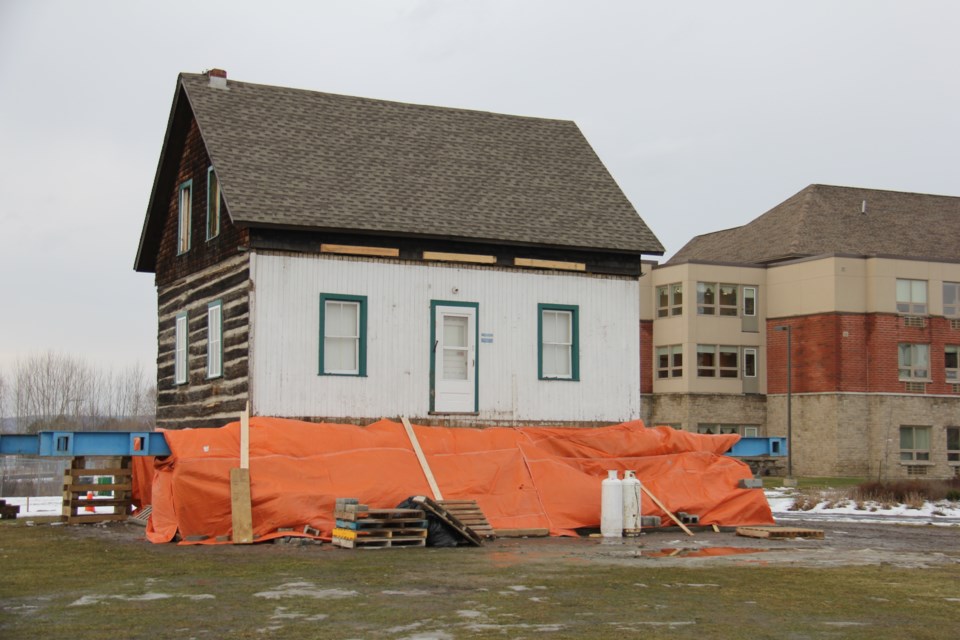Deryk Hagar, and I am a cultural heritage professional based in North Bay.
-----
As the snow settles on the relocation of the 100 plus-year-old Dionne farmhouse, and the efforts of Mr. Jeff Fournier, Mr. Ed Valenti and the Dionne Quints Heritage Board have proved successful to keep and sustain the museum in North Bay, the door lies open to officially acknowledge the birth of the Dionne Quintuplets at the national level.
In 1919, the Canadian Government established the Advisory Board for Historic Preservation, which would later become the Historic Sites and Monuments Board of Canada. Canada was coming unto its own as a young nation, and there was a desire to see many of our cultural heritage assets and sites recognized and valued for their historic significance. Grassroots campaigns and local communities helped apply pressure to the federal government in their efforts for support and recognition of historic sites and persons. The result was the development of a national heritage and conservation policy that would evolve into Canada’s National Historic Sites, our National Parks, and the administration of them both by Parks Canada.
Today, the Historic Sites and Monuments Board of Canada (HSMBC) mandate reads as follows:
“The mandate…is to advise the Government of Canada, through the Minister of the Environment, on the commemoration of nationally significant aspects of Canada’s history. Following a thorough evaluation process and recommendation by the Board, the Minister declares the site, event or person of national historic significance.”
The majority of National Historic Site nominations over the years have come from Canadian citizens who share a vested interest in preserving and commemorating their common heritage. National Historic Site designations commemorate places, like Bellevue House in Kingston, Ontario, the past residence of Sir John A. Macdonald; people, such as WWI air ace Billy Bishop and his childhood home in Owen Sound; and events, such as the “First Banding of a Bird” in Toronto, where James Henry Fleming placed a migration study band on a robin in 1905. That last one might seem a little peculiar, but it was designated along with many other noteworthy events that have happened across the country.
Once a site, person or event is supported by the Board and designated by the Minister, a burgundy and brass plaque is established at the significant location, and the subject is entered into the Directory of Federal Heritage Designations. It is also listed with Canada’s Historic Places initiative, an online portal to Canada’s historic sites. While a National Historic Site designation places no legal obligation or protection onto properties or structures, it identifies and acknowledges the heritage significance of the site, person, or event at the national level and does so in a dignified manner. For the legally-binding protection of historic sites in Ontario, one would look to their local municipality and the Ontario Heritage Act, or a conservation easement agreement with the Ontario Heritage Trust. The only other legally-secure option is direct ownership, either by the federal government through Parks Canada, or the province through the Heritage Trust.
In 2013, while on staff with the Callander Bay Heritage Museum, I nominated Dr. Allan Roy Dafoe and his Home (now the Callander Museum) as a National Historic Person and Site respectively. All of the necessary criteria were in place – the controversial physician was famous worldwide for his role in delivering and keeping the Dionne Quintuplets alive – an unheard of miracle in 1934. Further, his former home is well-preserved and intact today – it operates as a community museum with reliable funding and is accessible to the public. Also, Callander’s Municipal Council consented to the nomination in 2012, and designated the building under the Ontario Heritage Act in 2001.
In September, 2015 I was contacted by staff with the Heritage Conservation and Commemoration Directorate, Parks Canada. At that time, they appeared to be conducting preliminary research and evaluation of the Dionne Quintuplets, presumably as historically significant persons, as well as the event of their birth. While no confirmation was received then, it suggests that the HSMBC may be presented with the option to support both the Dionne Quintuplets and Dr. A.R. Dafoe as subjects to be designated. Now that the Dionne farmhouse has found a permanent home once more, is owned by the City of North Bay, and is set to be governed by an established board and operated as a museum, it opens the door to a national recognition of the birth of the Dionne Quintuplets, their ensuing lives, and supports the mandate of the rekindled Dionne Quints Museum, which is endorsed by the remaining sisters, Annette and Cecile Dionne.
The Dionne Quintuplets and their home, Dr. Dafoe’s home, and the ‘Quintland’ site are just several regional examples that are nationally significant, but not yet designated as National Historic Sites. So too is the First Spike location of the Canadian Pacific Railway in nearby Bonfield, the railway that united the country. So too are the ancient aboriginal La Vase Portages and Nipissing Junction, where Toronto’s first direct transcontinental link to Vancouver was established in 1886.
Also remarkable is the RAF Ferry Command School during WWII at the North Bay airport, researched by Capt. Doug Newman, Heritage Officer with 22 Wing North Bay, which ferried the wartime aircraft of Canada and U.S. over the Atlantic to help defeat Nazi Germany. The Cold War NORAD installation, interceptor squadrons, underground SAGE complex, and BOMARC missile site are also nationally significant.
North Bay and the Nipissing District have good reason to commemorate and share our national heritage with the rest of Canada and beyond. Practicing that conservation through nationally and provincially recognized programs are the best place to start in building our cultural heritage and tourism identity.
Deryk Hagar
Cultural Heritage, Buildings and Sites -
Consulting and Promotions
North Bay



